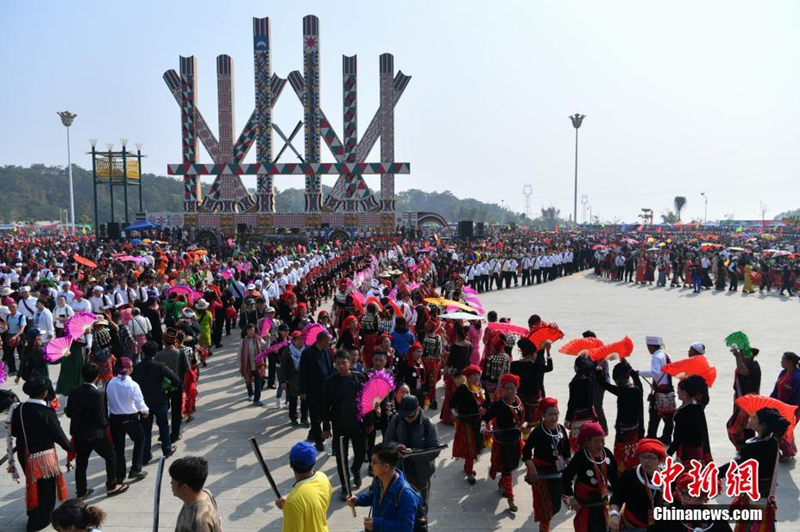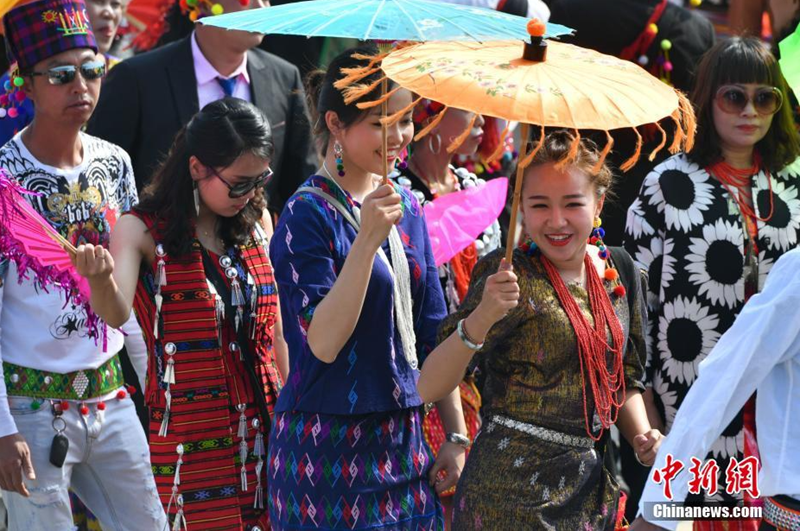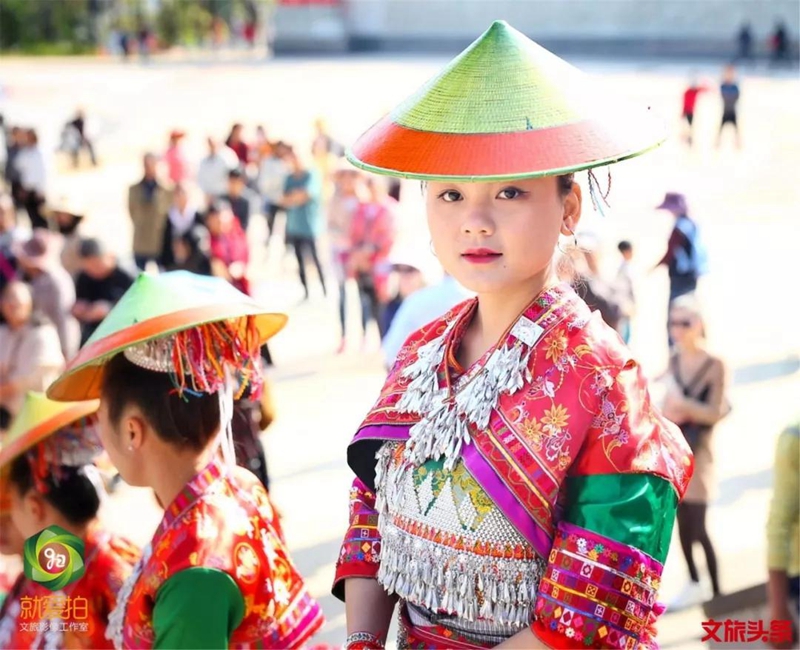Diverse Spring Festival customs in Yunnan
The Spring Festival is the most important traditional festival in China, marking the arrival of a Chinese lunar new year and a renewal of everything on earth. For thousands of years, the ethnic groups in Yunnan province have ushered the grand occasion with diverse customs.
Group dance with shared tunes

The Jingpo ethnic group in Yunnan enjoys welcoming the lunar new year with singing and dance. In west Yunnan’s Dehong Jingpo Autonomous Prefecture, the Munao Zongge dancing parties were held in all counties, where the Jingpo folks stop working temporarily to join in the festivities. “In the Jingpo language, Munao Zongge means dancing together, and the Jingpo people like welcoming the lunar new year with joyful singing and dance,” said Zhao Baozhong, a Jingpo cultural promoter.
Along with rhythmic drum beats by strong Jingpo men that sound across the public square, the Munao Zongge dancing parties kick off. Two head dancers, with a long knife in his hands, lead the processions. Wearing a serious and solemn air, they take the role of dance leader. Following the head dancers, the Jingpo folks with festival costumes walk into the square one after another. Hand in hand, they goosestep or dance to the beats. The nearby tourists gradually get involved, forming a group dance of thousands of participants. The mighty formation seems to be endless, and a bird view of it would look like a winding snake. Along with changes of the drum beats, the dancers’ steps change accordingly, while the Jingpo woman dancers wave the ribbons and colorful fans.

Each Munao Zongge dancing party is like a sea of joy. With cheers and laughter going on, the warm-hearted Jingpo folks heated up the air on the spot to new heights. On the sunny days in Dehong, visitors are greatly entertained by the sweating dancers. The Munao Zongge dancing party serves as a melting pot.
Romantic “eastern valentine’s day”
In Yunnan, the Dai ethnic branch that lives in Yuxi’s Xinping County is called the “Huayao Dai” or the Dai people with a flowery waist. They are so called because of their classic and elegant costumes that feature embroidered fine patterns and a riot of silver decorations.

During the Spring Festival, the Huayao Dai folks would have a merry festivity called Huajie Festival. On the occasion, the Dai young men and women in festival costumes put out colorful threads at the public square’s entrance and streams of tourists would cross over the lines, wishing a healthy and happy life in the new year. The Huayao folks also tie a red thread to the visitors, which is seen as a token of good luck.
At the Huajie festival, the Dai girls from the same village form teams to have talent shows and pageants, with the most beautiful ones selected from votes by the present audience. During the shows, the Huayao girls debut their well-prepared works of Dai costumes. The dazzling costume patterns, mostly in the shapes of anise, mint, phoenix flower and areca leaf, showcase the ingenuity Dai girls, while spelling out their longing for a happy life.

In the eyes of Huayao people, the Huajie festival is also the occasion for the youngsters to show affection, and it is thus called the “eastern valentine’s day.” On this day, every Huayao girl would have a bamboo basket on their back, with fried eels, cured eggs and sticky rice in it. If they happen to meet the man they love, the basket will be presented to him. “Conveying their affection with gifts shows the reserved characters of the Huayao folks, which has formed a unique cultural custom,” said Dao Xiangmei, vice president of the Xinping-based Huayao Dai Cultural Association.